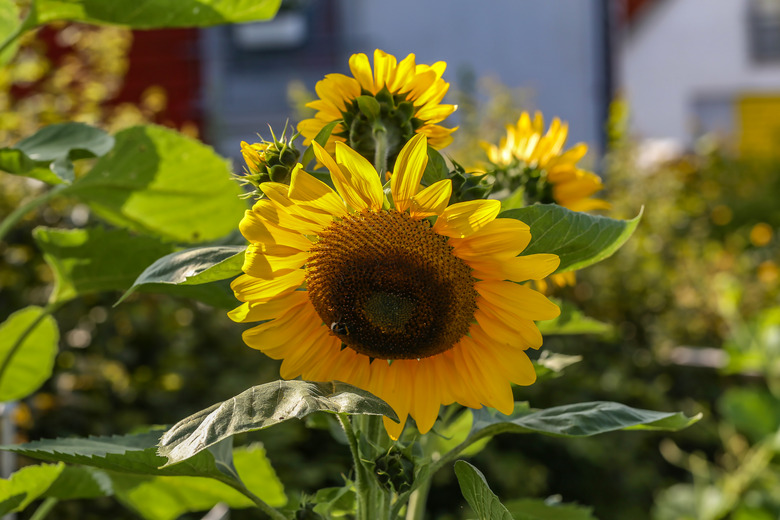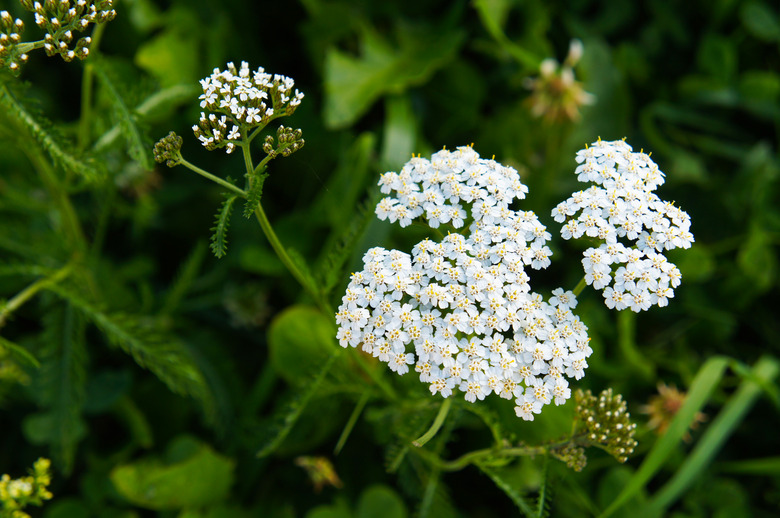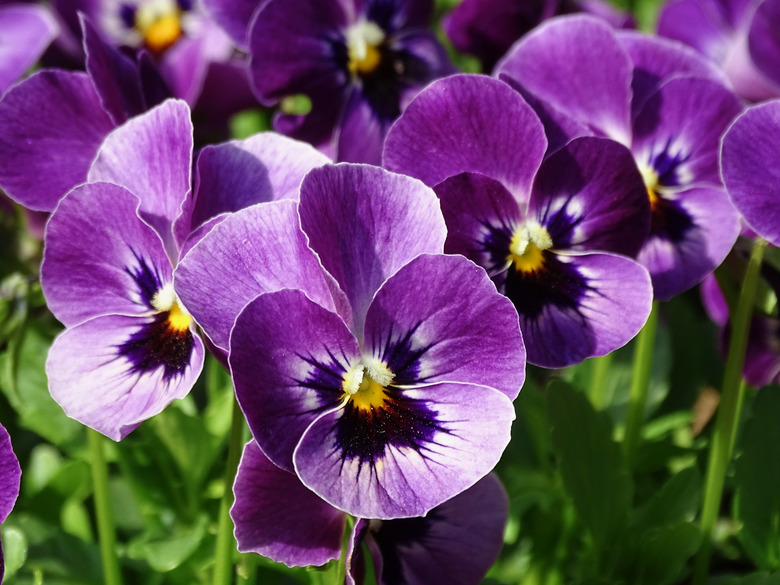Easiest Flowers To Grow From Seed
The easiest flowers to grow from seed are also some of the hardiest and fastest-growing flowers, and that's good news for gardeners who want to brighten things up and attract pollinators early in the season. You can sow seeds in early spring after the danger of frost has passed, and in some cases, you'll be enjoying blooms in June. Most of the easy flowers to grow are annuals, and annual flowers have to be replanted year after year. Some easy flowers are perennials, though, and they will flower year after year. Even annuals will make a return appearance if they self-seed, as many native wildflowers do.
When you direct-sow seeds into the flower garden, you sometimes have to prepare the soil by turning it with compost, but in the case of many of the easiest flowers to grow from seed, that isn't necessary. They are easy to grow because they aren't particular about soil, but in most cases, they'll need full sun for a minimum of six hours a day. Flower seeds also need water for germination, so it's important to keep the soil moist until the flowers sprout and develop strong stalks. After that, you can usually reduce watering for the rest of the growing season and let the rain nurture your cottage garden.
Sunflowers Are Fun for Kids
Sunflowers Are Fun for Kids
Sunflower (Helianthus annuus) seeds are easy to come by, and as long as you don't roast and salt them, they sprout quickly. Just pop a seed into the ground in a sunny, sheltered spot and wait, and depending on which of the many cultivars you plant, you may soon have a towering 6- to 14-foot happy face attracting bees, hummingbirds and butterflies. Many sunflowers are heliotropic, which means the flowerheads turn to follow the sun's path in the sky, and they take from 85 to 95 days to reach full height. When the seeds from heirloom varieties are mature, harvest them for new flowers the following year as hybrid cultivars may not come true to seed or may not germinate at all.
Marigolds and Calendula: Early Season Favorites
Marigolds and Calendula: Early Season Favorites
Marigolds (Tagetes spp.) will grow as an annual in zones 2 through 11, which is just about anywhere except directly at the North Pole, but they are sun lovers and do better when it's warm. One of the fastest-growing annual flowers, marigolds will bloom eight weeks after you sow the seeds, so if you want early spring color, sow the seeds about an inch apart as soon as the last frost date passes and the soil warms.
Calendula (Calendula officinalis) is often confused with marigold and is even known as pot marigold, but even though it's a separate species, it's just as easy to grow, and it blooms just as quickly if not more quickly. A mere six to eight weeks after you sow seeds in the early spring, spacing them about 6 inches apart, your garden will be awash in golden, multipetaled flowers.
Yarrow: An Aromatic Perennial
Yarrow: An Aromatic Perennial
Like those of most perennials, yarrow (Achillea millefolium) seeds take a little longer to germinate than annual seeds, and they should be in a sunny part of the garden, but once that happens, the plant will produce fragrant, flat-topped clusters of pink, red or white flowers year after year. Yarrow is a tough, fast-growing wildflower that attracts bees and other pollinators, and it grows easily in virtually any soil type in zones 3 to 10. It typically blooms from June through September. It isn't afraid of the hot sun and will provide shade for more tender species.
Nasturtium: Easiest Flowers for Salads
Nasturtium: Easiest Flowers for Salads
Besides being beautiful in the garden and tasty on salads, nasturtium (Tropaeolum) is one of the easiest flowers to grow from seed. Although it's an annual in USDA zones 2 through 11, it performs best in areas that have relatively cool summers. The perky little flowers appear as early as May and last until September, attracting butterflies and keeping the deer away. The flowers taste as good as they look; they have a peppery taste and are often used as decorative garnishes. The immature seed pods taste like capers when marinated in brine.
Alyssum: A Fast-Growing Ground Cover
Alyssum: A Fast-Growing Ground Cover
Alyssum (Lobularia maritima) is a perennial in zones 5 to 9 and is one of the easiest flowers to grow as ground cover since the plant tends to creep rather than grow tall, and it typically reaches heights of less than 12 inches. The four-petaled blooms are small and white, and there are often so many that they completely hide the foliage. Alyssum is imported from southern France and grows best when seeds are sown in full or partial sun a few weeks before the last frost.
Add Sweet Peas to Your Bouquet
Add Sweet Peas to Your Bouquet
Sweet pea (Lathyrus odoratus) seeds are peas, so they're easy to handle and plant in your garden bed, but rats and mice love them, so the seeds and the young plants need to be protected by a chicken-wire cloche. Once established, the vines will quickly climb a fence or trellis and produce fragrant, delicate blooms that you can add to your cut-flower collection. Sweet peas grow as annuals in zones 2 through 11, and in northern zones, the seeds should be planted a few weeks before the last frost to produce healthy plants that will bloom throughout the growing season.
Pansies — a Garden Favorite
Pansies — a Garden Favorite
Pansies (Viola x wittrockiana, USDA zones 6-10) are descendants of a species of the European wildflower Viola tricolor, also known as Johnny jump up, and they are easy to grow from seed, typically growing as biennials in northern climates and as annuals in southern ones. Because the plants take a long time to mature, it's usually best to plant the seeds as early as possible in the growing season, perhaps even starting the seeds indoors 10 to 12 weeks before the last frost. Pansies flower profusely, especially if you remove spent flowers, and will often bloom again in the fall.
Where to Get Seeds
Where to Get Seeds
One way to get seeds is to collect them from your favorite flowers at the end of the growing season, but there's a problem with this approach. If the plants you're growing are hybrids, which is true for most non-native plants, the seeds may not come true, and next year's plants may not look anything like this year's plants. You seldom have this problem when growing native wildflowers, though, and since many native species are self-seeding, they'll take care of their own propagation.
If you have your heart set on a particular cultivar, such as the striking Helianthus annuus 'Chianti,' your best bet is to buy the seeds, and if they aren't available at your local garden center, there are multiple online sources. Some of the best known include Burpee, Gurney's, Jung Seed, Select Seeds and Bloomscape, and there are many others. Just enter the name of the cultivar you're seeking in the browser search window and start shopping.


